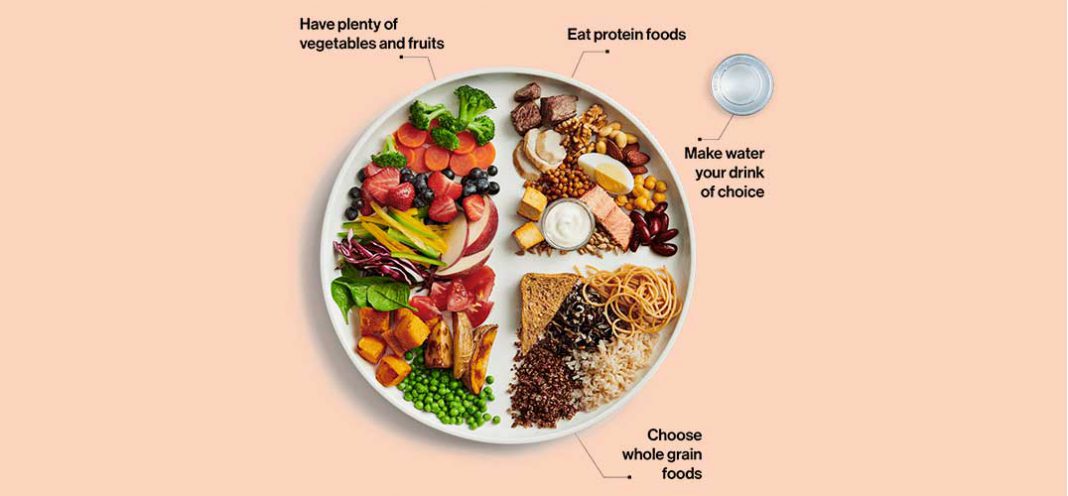by Laurel LeConte
Health Canada published its most recent food guide on January 22. Versions of Canada’s Food Guide have been released with some regularity since 1942 when the original purpose of the Food Guide was to prevent nutritional deficiencies of Canadians within the restrains of wartime food rationing. Since then, the Food Guide has been transformed repeatedly with the ultimate mandate being the same: guiding food selection and promoting health across the country.
Most developed countries produce national food guides which were historically intended as both basic education tools and templates for food policy in effort to promote healthy diets. Although many people have criticized past versions of the Food Guide, it should be acknowledged how challenging it must be to produce a relevant document for such a diverse group as 36 million Canadians.
Critics of previous Food Guide versions argued that representatives from the food and beverage industry had too much influence on what we were told we should be eating. The current version of the Food Guide aimed to be free from bias; industry input was only received during the public consultations where any input could be considered for final recommendations. Many people also fail to appreciate the science that goes into our national food guides. Heath Canada monitors evidence from credible scientific sources and attempts to adapt guidelines as information evolves. High-quality, peer-reviewed systematic reviews as well as reports from leading scientific organizations influence each revision.
Unlike past Canada Food Guides, which were intended to be an all-in-one policy and education format, the current version is a simple visual with key messages, hopefully easier to interpret by the average person.
The visuals and messages included in the new food guide are a summary of strong and existing food and health relationships and also emphasize changes in available evidence since 2015. For example, although counter to popular fad diets—diets with ample carbohydrates in the form of vegetables, fruit and whole grains—continue to demonstrate new and strong protective properties against developing cardiovascular disease and are therefore featured prominently in the guide.

A radical change to the new Food Guide is that it now acknowledges that not only what we eat is important, but how we eat is also important for health. Canadians are encouraged to cultivate a healthy relationship with food and eating by cooking more often, enjoying food and eating with others. Cooking and food preparation using nutritious foods is promoted as a practical way to support healthy eating. Research has demonstrated that our recent shifts towards purchasing and consuming processed and convenience foods has had a detrimental effect on our health. Our reliance on convenience foods has decreased the transfer of food skills from parents, caregivers and extended family to children and adolescents. Less individuals are cooking at home and negative trends in our population health are reflecting this reality. I am hopeful that the new Food Guide serves as a reminder or reinforcement on the importance of prioritizing cooking and family meals.
As a registered dietitian, my professional role is diverse and the Canada food guide has been a relevant resource over the years. Although I like the fresh take on the Food Guide and I feel that it reinforces many of my existing personal and other professional views on food and health, I am more interested in seeing the subsequent and supporting documents set to be released from Health Canada later in 2019. Health Canada is working on publishing a healthy eating pattern for health professionals and policy makers which will include more specific recommendation on amounts and types of foods for life stages. The previous Food Guides included specific food groups with set serving sizes intended to ensure adequate intakes of specific nutrients. (Example milk and alternatives for Calcium and Vitamin D.) I’m interested in seeing how this information is reflected or changed going forward. It will have a huge impact on what is served, produced and sold across Canada, greatly influencing many sectors.
If I had to name one (or two) faults about the new Food Guide, it would be that it doesn’t necessarily reflect cultural foods or realistic options for those on a limited income. I am optimistic that subsequent food guides will take this into account so that even more Canadians will feel that the national food guide can resonate with their personal circumstances.
January seems like a great month to release a new Food Guide with an emphasis on home cooking. It’s a convenient time of year to stay inside, dig out the old cookbooks or try something new. If you’re looking for some cooking inspiration; here are a few websites for some relatively easy recipes to get you started. Your local public library is also a great resource for cookbooks and cooking inspiration.
Health Canada Recipes; Canada.ca/FoodGuide
www.unlockfood.ca
www.heartandstroke.ca/get-healthy/recipes
Happy cooking!
Laurel LeConte is a registered dietitian working in local healthcare since 2006. She has a Bachelor of Science in Applied Human Nutrition from Mount Saint University and a Master’s degree in Health Management from McMaster. Most weekends Ms. LeConte can be found in her home kitchen, cooking for family and friends and posting the results on Instagram. You can follow her on Instagram, @lecontelaurel for practical examples of her home cooking and recipes.






